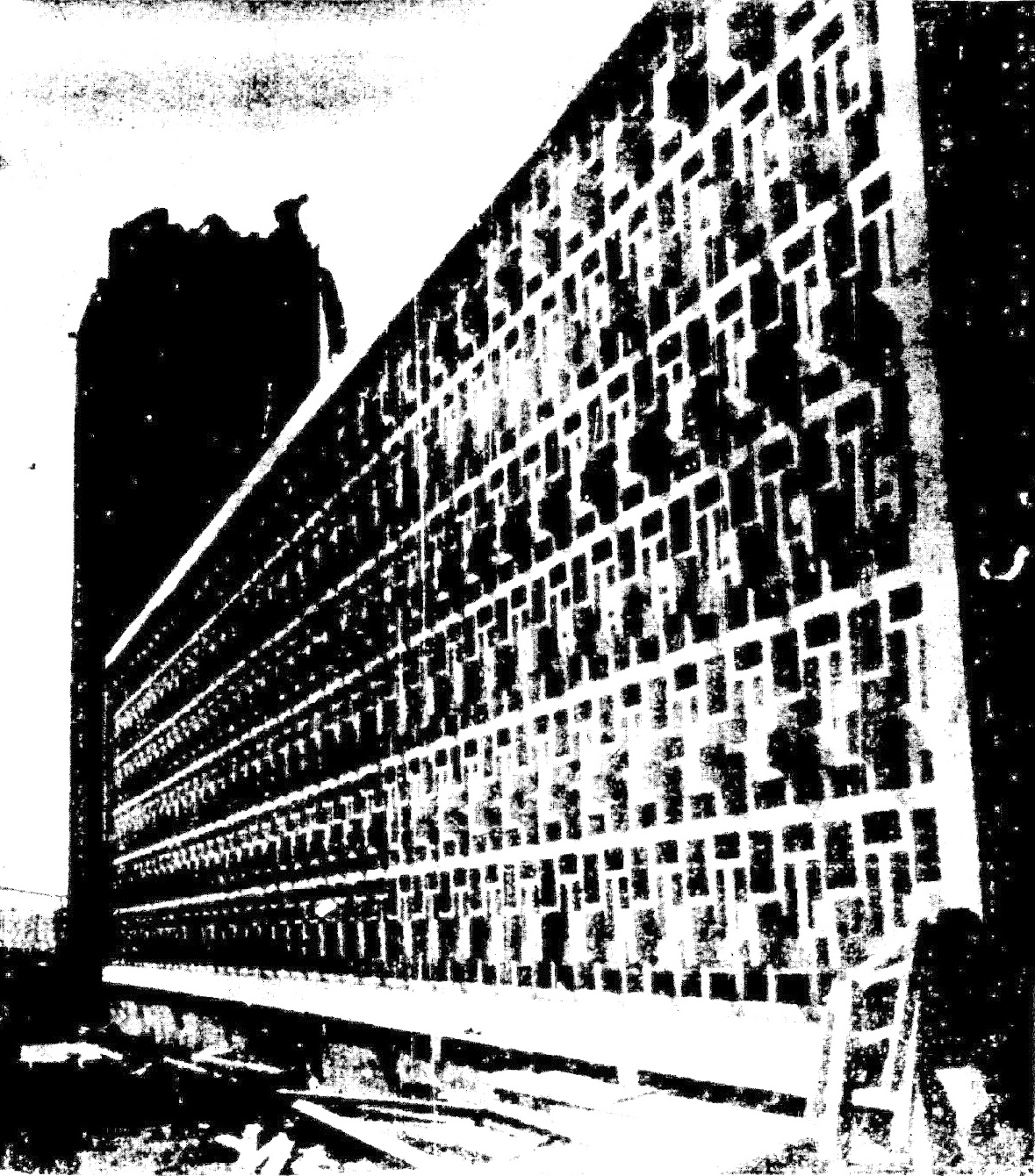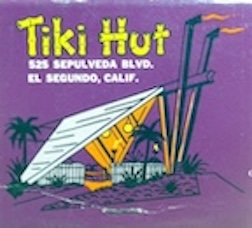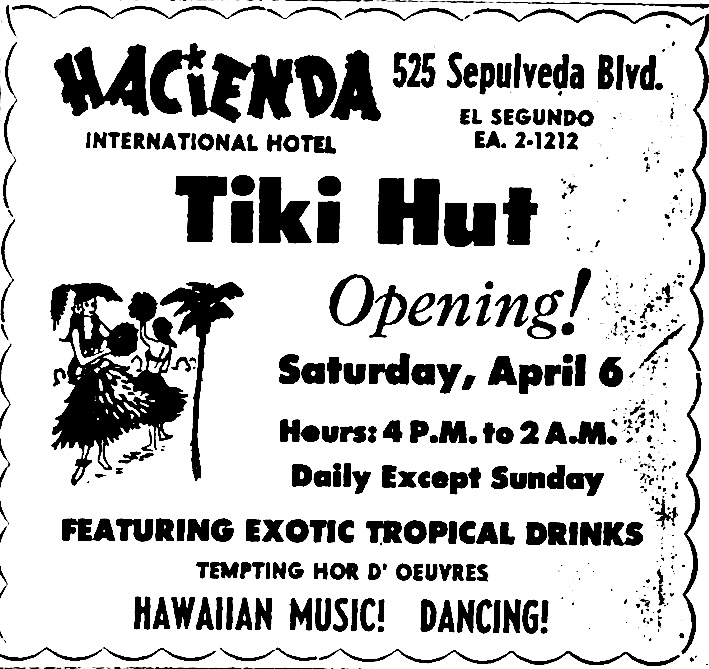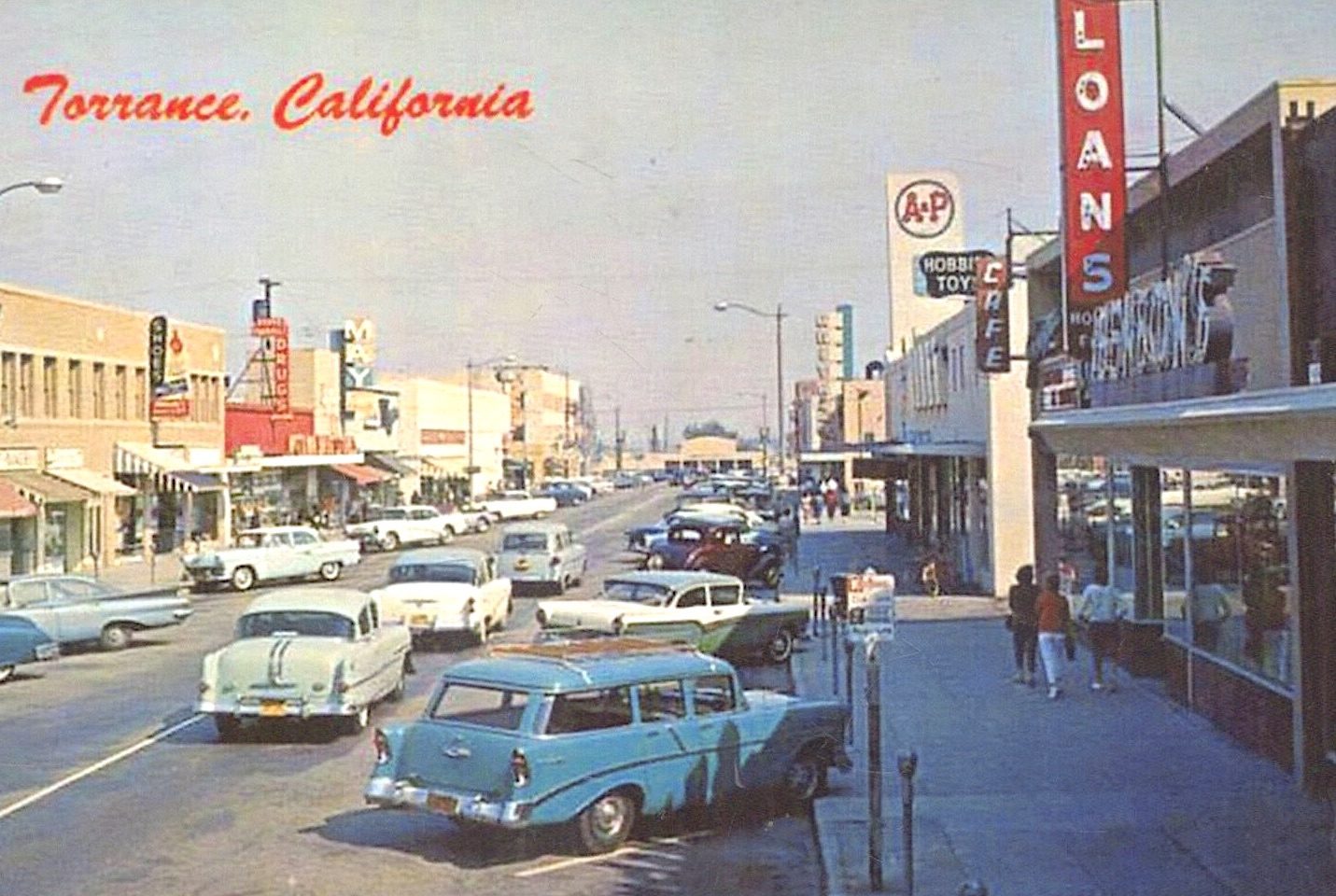
The commercial development of the area surrounding Los Angeles International Airport exploded in the 1950s as the airport itself grew and changed.
Commercial passenger airlines didn’t begin operating at LAX until 1946, and the burgeoning airport didn’t even get its official name until 1949. The airport’s facilities were makeshift for its first few years, but they were soon overwhelmed by the sheer volume of passengers using it.
The north side of Century Blvd. leading to LAX now is carpeted with high-rise hotels, but that didn’t even start to happen until the 1960s, following the redesign of the airport that opened in 1961.
Add in a growing concentration of aerospace firms in the area and in El Segundo south of the airport in the 1950s, and the need for infrastructure improvements became glaring.

Still, the announcement in October 1957 concerning Hollywood-based hotelier Allan Siegal’s plans to build a $1.5 million hotel on the west side of Sepulveda Blvd. between Holly and Pine avenues was big news locally, resulting in a front-page banner headline in the El Segundo Herald. A small residential development surrounded by agricultural land had stood on the site previously.
The proposed four-story, 220-room Thunderbird Hotel, to be located about 1.5 miles south of LAX at 525 N. Sepulveda Blvd., was the largest such project at that time in the city’s history.
Architect Raymond A. Stockdale’s mid-century modern design included plans for a two-story restaurant with cocktail lounge and coffee shop on the first floor, and a large upstairs banquet room capable of seating 600.
The Thunderbird would also include a large parking lot and swimming pool, and retail space for a half dozen or so shops on the ground floor of the hotel. The city approved the project, and a groundbreaking ceremony featuring guest speaker California Lt. Gov. Harold Powers was held on June 18, 1958. The Herald described the hotel as the largest of its kind in the South Bay.

It’s important to remember the key role that Sepulveda Blvd. played at the time. The segment of the 405 Freeway running through the South Bay had yet to be completed, much less the 105 Freeway, which was more than three decades off.
As a result, Sepulveda for years served as a main artery leading to the airport, and was perennially clogged with airport traffic until the 1961 LAX redesign, making the boulevard a prime location for a major hotel development.

The Thunderbird Hotel’s grand opening took place on April 24, 1959. Hundreds of people attended, hearing state Attorney General Stanley Mosk and other dignitaries speak. They also had the chance to visit the retail shops, which included De Mere fashions, Allen Rabinoff’s Shop for Men, Flair for Beauty, a barbershop and a sundries store.
With its sizable banquet room, the Thunderbird soon became a meeting place for a wide variety of community groups and activities.
A few months after the hotel’s grand opening, its co-owner, Siegal’s son Marc, announced a plan to build a seven-story, 180-room hotel wing along Indiana Ave., just west of the main hotel. It was completed in 1961.
More changes came in the 1960s. In 1962, the Thunderbird Hotel Coffee Shop was refashioned into a Polynesian-style tiki restaurant and bar, done up in a style that was then all the rage. Renamed the Huki Lau, it came complete with a built-in waterfall behind the bar.
A major change came in 1965, when the Thunderbird was bought out by Las Vegas-based hotelier Warren Bayley, who’d opened his flagship Hacienda Hotel on the Las Vegas Strip in 1956. The Thunderbird became the Hacienda.

Three years later, its owners decided that customers were confused by the Huki Lau name for their tiki restaurant, and changed it to the more pedestrian Tiki Hut.
In 1979, The Hacienda decided to build an additional nine-story hotel on the plot of land just south of its location. Somewhere during this era, the Tiki Hut was phased out.
In 1987, a major remodel of its exterior removed most of the distinctive mid-century modern architectural features that might have qualified the structure for National Register of Historic Places landmark status. The request was denied in 2020.
Another ownership change occurred in 2015, when the Rubicon Companies purchased the Hacienda properties. The company announced it would split the property into two separate hotels.
Under the plan, the southern property built in 1979 would become the Aloft El Segundo hotel, while Marriott would rebrand the original Thunderbird/Hacienda location as one of its lower-priced Fairfield Inn and Suites hotels. Both of these changes occurred in 2016. Rubicon then sold the property to the Blackstone Group in 2017.

In April 2022, the El Segundo City Council unanimously approved a mixed-use development proposal from the Pacific Commons joint venture group to add additional housing and retail space while allowing the Fairfield Inn and El Segundo Aloft hotels to continue to operate.
Two of the three parking lots on the property, on its north and south ends, will be converted into six-story residential housing buildings, while the middle portion directly adjacent to the Fairfield Inn will become a multistory parking garage. As of this writing, construction has yet to begin.

Sources:
Cultural Resources Technical Report for the Pacific Coast Commons Specific Plan Project El Segundo California, prepared by the Dudek engineering firm, October 2020.
Daily Breeze archives.
El Segundo Herald archival database, El Segundo Public Library website.
El Segundo: Seventy-Five Years: A Pictorial History of El Segundo, California, by Eileen Curry Hunter, H2 Limited Publishers, 1991.
Los Angeles Times archives.
Urbanize Los Angeles website.

